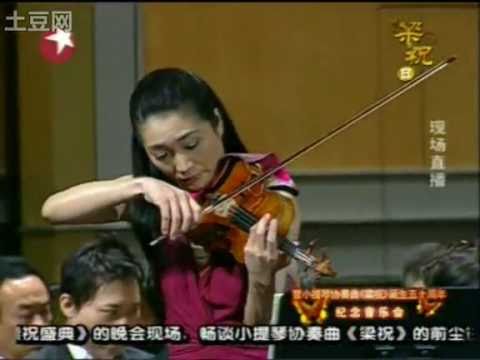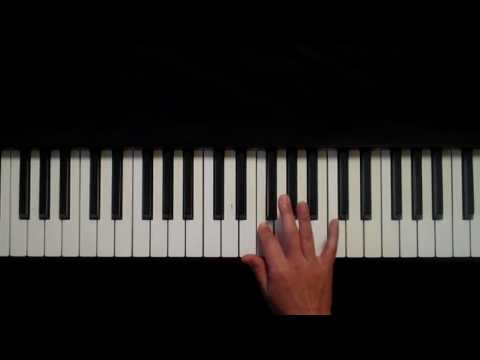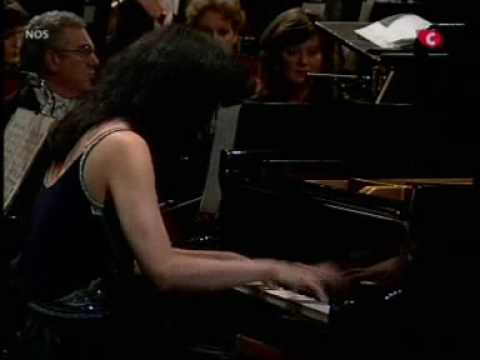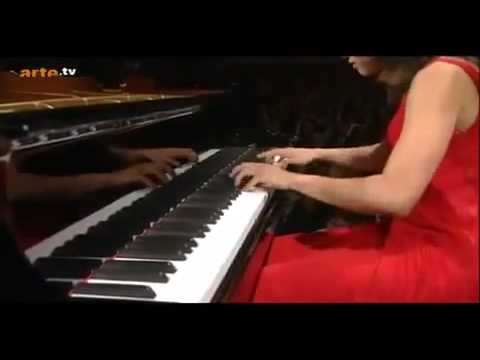1.5: Keys and Scales
- Page ID
- 72349
Introduction
Scales are orderly arranged combinations of pitches from low to high or from high to low.
Listen: Scales
Click on the link to hear some examples of these different types of ascending scales: Scales
- Major scale—a type of diatomic scale
- Minor scale—a type of diatomic scale
- Pentatonic scale
- Chromatic scale
- Whole tone scale
The different scales are described below and have additional examples.
Diatomic Scales
Major and minor scales are diatomic. The major scale sounds happy. The following is an example of a composition based on a major scale.
Minor sounds sad. Here’s an example of a composition based on a minor scale.
Pentatonic Scale
The pentatonic scale is used widely in music around the world, especially in folk music. Please watch the first 3:30 minutes of the following video.
Gang and Zhanhao, “Butterfly Lovers” Violin Concerto, below, is based on the pentatonic scale.
Below, you can listen to traditional music from Uganda that’s based on the pentatonic scale.
Chromatic Scale
The Schoenberg piano concerto, below, is based on a series of chromatic tones.
In Rimsky-Korsakoff’s “Flight of the Bumblebee” the melody is based on a chromatic scale.
The following video shows the keyboard and notes played during the “Flight of the Bumblebee.”
Listen: Major and Minor Keys
Listen to the following excerpts. Three are in a major key and two in a minor key. Can you tell which is which simply by listening?
Guitar 1:
An audio element has been excluded from this version of the text. You can listen to it online here: http://pb.libretexts.org/map/?p=34
Guitar 2:
An audio element has been excluded from this version of the text. You can listen to it online here: http://pb.libretexts.org/map/?p=34
Guitar 3:
An audio element has been excluded from this version of the text. You can listen to it online here: http://pb.libretexts.org/map/?p=34
Tanz:
An audio element has been excluded from this version of the text. You can listen to it online here: http://pb.libretexts.org/map/?p=34
Greensleeves:
An audio element has been excluded from this version of the text. You can listen to it online here: http://pb.libretexts.org/map/?p=34
If you must determine whether a piece of music is major or minor, and cannot tell just by listening, you may have to do some simple harmonic analysis in order to decide.
Tonal Center
A scale starts with the note that names the key. This note is the tonal center of that key, the note where music in that key feels “at rest.” It is also called the tonic, and it’s the “do” in the solfeggi system.
Major Scales
To find the rest of the notes in a major key, start at the tonic and go up following this pattern: whole step, whole step, half step, whole step, whole step, whole step, half step. This will take you to the tonic one octave higher than where you began, and includes all the notes in the key in that octave.
Play scales on either real or virtual piano. Remember, the closest distance between two keys is a half step.
Example
These major scales all follow the same pattern of whole steps and half steps. They have different sets of notes because the pattern starts on different notes.

Listen: Major Scales
Listen to the difference between the following scales:
C major scale:
An audio element has been excluded from this version of the text. You can listen to it online here: http://pb.libretexts.org/map/?p=34
D major scale:
An audio element has been excluded from this version of the text. You can listen to it online here: http://pb.libretexts.org/map/?p=34
B flat major scale:
An audio element has been excluded from this version of the text. You can listen to it online here: http://pb.libretexts.org/map/?p=34
Exercise
For each note below, write a major scale, one octave, ascending (going up), beginning on that note. If you’re not sure whether a note should be written as a flat, sharp, or natural, remember that you won’t ever skip a line or space, or write two notes of the scale on the same line or space. If you need help keeping track of half steps, use any piano keyboard, a picture of a keyboard, a written chromatic scale, or the chromatic scale fingerings for your instrument.
If you need staff paper for this exercise, you can print out this PDF file.

Music in Different Major Keys
What difference does key make? Since the major scales all follow the same pattern, they all sound very much alike. Here is the tune “Row, Row, Row Your Boat” written in G major and also in D major.


The same tune looks very different when written in two different major keys.
Listen: Compare Major Keys
Listen to this tune in G major and in D major. The music may look quite different, but the only difference when you listen is that one sounds higher than the other.
So why bother with different keys at all? Before equal temperament became the standard tuning system, major keys sounded more different from each other than they do now. Even now, there are subtle differences between the sound of a piece in one key or another, mostly because of differences in the timbre of various notes on the instruments or voices involved. But today the most common reason to choose a particular key is simply that the music is easiest to sing or play in that key.
Contributors and Attributions
- Authored by: Catherine Schmidt-Jones. Provided by: OpenStax. Located at: http://cnx.org/contents/86cbf322-1fc8-4c9d-aa3d-7b732e2019af@28/Major_Keys_and_Scales. License: CC BY: Attribution
- Chopin Etude Op 10 No.5 Valentina Lisitsa. Authored by: ValentinaLisitsa. Located at: https://www.youtube.com/watch?v=4pyqLbi2wLU. License: All Rights Reserved. License Terms: Standard YouTube License
- Rachmaninov - Prelude in C Sharp Minor. Authored by: Your Favorite Classical Pieces. Located at: https://www.youtube.com/watch?v=wXQCPAR0EHo. License: All Rights Reserved. License Terms: Standard YouTube License
- How Music Works 1 - Melody - Part 1. Authored by: Timegrinder. Located at: https://www.youtube.com/watch?t=180&v=PnbOWi6f_IM. License: All Rights Reserved. License Terms: Standard YouTube License
- Butterfly Lovers Violin Concerto by Akiko . Authored by: Morning2k. Located at: https://www.youtube.com/watch?v=K_qd-9wD6qA. License: All Rights Reserved. License Terms: Standard YouTube License
- Traditional Music II - Uganda. Authored by: FaceMusicSuisse. Located at: https://www.youtube.com/watch?v=363Nv-5oYBA. License: All Rights Reserved. License Terms: Standard YouTube License
- Chromatic Scale. Authored by: learnpianoonline. Located at: https://www.youtube.com/watch?v=sr2rXc9Qu4A. License: All Rights Reserved. License Terms: Standard YouTube License
- Yuja Wang plays the Flight of the Bumble-Bee from Rimsky-Kor.mp4. Authored by: msystemize. Located at: https://www.youtube.com/watch?v=-yZPrrboTkY. License: All Rights Reserved. License Terms: Standard YouTube License
- Flight of the Bumblebee - Piano - Synthesia. Authored by: Pianoreader. Located at: https://www.youtube.com/watch?v=MK0z3LS45xU. License: All Rights Reserved. License Terms: Standard YouTube License










